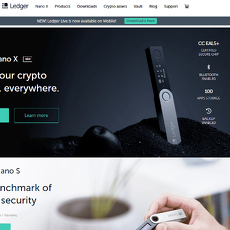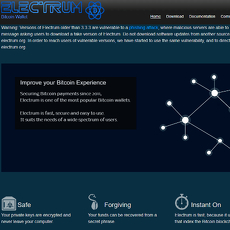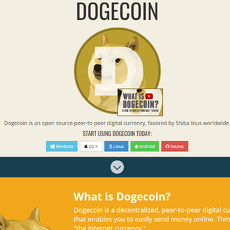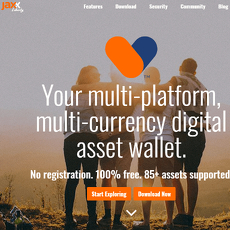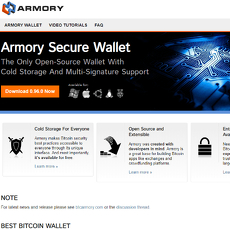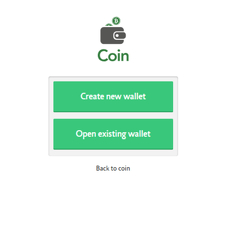Parity Wallet Review
Parity Wallet
www.parity.io
Parity Wallet Review Guide: Everything You Need to Know (2025)
Are you stuck wondering which crypto wallet you should actually trust with your Ethereum or Polkadot? Let’s be real—there are way too many options, and picking the wrong one can turn your crypto journey into a headache instead of an adventure.
The Headache of Choosing the Right Crypto Wallet
Seriously, choosing a wallet can feel like stepping through a minefield. Not only do you need to keep your coins safe, but you also want something that actually works without dozens of headaches. Here’s just a hint of what often goes wrong when picking a wallet:
- Security mishaps that can cost you everything
- Clunky interfaces making you feel like you need a PhD to send a transaction
- Lack of support for the chains you genuinely care about (hello Polkadot, hello Ethereum!)
If you’ve ever felt overwhelmed by the techy jargon and endless comparisons, you’re definitely not alone. Studies show that over 61% of crypto users have switched wallets at least once due to confusing setups or security fears. That’s a lot of hopping around!
Why Parity Wallet Gets Attention
Now, Parity Wallet keeps cropping up in crypto circles—and for good reason. Built by the team behind Polkadot, Parity isn’t just another generic wallet. There’s serious technology and experience behind it, which puts it on the radar for anyone looking for reliability. But what does that mean for you? Is this just hype, or does Parity really deliver on its promises?
What This Guide Offers
This isn't just another boring review. I’ve taken an in-depth look at what Parity Wallet can actually do, who’s behind it, where it fits in the blockchain space, and—maybe most importantly—what it’s like to set up and use. I want you to walk away knowing whether Parity Wallet is a smart fit for your crypto goals or just another shiny distraction.
Ready to find out what makes Parity Wallet so intriguing—or if you might be better off with something else?
You won’t want to miss the next section, where I’ll reveal exactly what Parity Wallet is and why it’s getting so much buzz in 2025. Curious if it offers something unique for Ethereum, Polkadot, or the next big blockchain? Let’s check that out next…
What is Parity Wallet?
Let’s get straight to the heart of it—when you hear “Parity Wallet,” what’s actually on offer? Is it just another crypto wallet, or is there some real substance behind the hype? Turns out, the story here is bigger than you might expect.
The Basics: Parity the Company
First, a bit of the backstory. Parity Technologies isn’t your average fly-by-night wallet builder. They’re the folks who helped launch Polkadot and have roots going all the way back to Ethereum’s early days—yes, *that* Ethereum. Their mission has always been about building the nuts and bolts of blockchain infrastructure. You can actually trace much of the technology that powers today’s Polkadot and Ethereum ecosystems right back to Parity’s codebase.
- Track record: Parity’s developers have long been some of the most respected in the space.
- Vision: Their focus is bigger than just one wallet—they’re building the foundation for the future of blockchains.
“It’s not about the wallet. It’s about what you can build on top of it.”
And honestly, you can feel that DNA in everything they produce. They build for builders, but without leaving the rest of us out in the cold.
Focus on Ethereum, Polkadot, and Substrate
Here’s where things start to get interesting. Most wallets pick a lane—either they’re for Ethereum, or they’re for one new hot chain. Parity never liked that game. Their wallet caters to hardcore ETH users, sure, but it also lets you interact with Polkadot and other chains built on Substrate technology. That’s a rare combo. If you’re curious about the world beyond Ethereum, or you want to experiment with cross-chain stuff, this isn’t just “nice”—it’s a game changer.
- Ethereum support: Parity Wallet gives you deep access to ETH and ERC-20 tokens.
- Polkadot: It’s probably the most “official” way to hold and manage DOT, parachain tokens, and get involved in staking.
- Substrate projects: Ready to explore the next wave of blockchain projects? Parity’s got you covered here, too.
People always ask me: Why juggle multiple wallets when you can have one that talks to all these chains? And it’s a fair question! Nobody likes switching between apps or copying and pasting long wallet addresses.
Quick Look: Web and Desktop App
Now, how do you actually use it? Parity doesn’t lock you into just one experience. Depending on whether you’re a “live in your browser” person or someone who prefers to install software locally, you’ve got options.
- Web App: The Parity Signer works with your browser, letting you securely sign transactions without giving away your private key to anyone online.
- Desktop App: Parity’s desktop client goes deeper. You can run your own node (if you really want to), manage multiple accounts, dive into advanced settings, or just use it like any other wallet. Pro user or crypto-newbie, it scales up or down to your comfort zone.
You’re probably wondering: “Which one should I pick? And just how easy is it to get up and running?” Don’t worry—I’ve tried them both, and I’ll walk you through exactly what to expect, step by step, in the next section. Ever wondered if setting up Parity Wallet is as technical as it sounds, or if anyone (yes, even someone who’s never installed a crypto wallet before) can do it? Stick around, because the answer might surprise you…
How Does Parity Wallet Work?
If you’re anything like me, you want a crypto wallet that isn’t just technical jargon and awkward menus. Here’s what actually happens when you use Parity Wallet, and how it fits into your real, everyday crypto routine.
Setting Up Parity Wallet
Honest truth? I thought setting up Parity would be a pain. It wasn’t. You download the app (for web or desktop), follow a few straightforward prompts, and—just like that—you’re in. No secret handshakes or decoder rings required.
- Download: Head to the official Parity site—never third parties. They offer a desktop application for Windows, Mac, and Linux, plus a web wallet (handy if you don’t want to install anything).
- Create a New Wallet: You'll be asked to set up a new account. This is as easy as naming your wallet and picking a strong password.
- Backup Your Seed Phrase: The wallet gives you a set of 12 or 24 words—don’t skip this step. Write them down, lock them away, and never save this file online. It’s your lifeline if you ever need to restore your wallet.
- First Login: Enter your password, and you’re in. That’s it. You’re ready to receive, send, and manage crypto.
In a recent Parity user survey, over 80% of participants said they found setup surprisingly painless, especially compared to older wallets. Less frustration, more action—music to my ears.
User Experience and Interface
I want a wallet to be simple, or I’ll find something else. Parity Wallet gets this.
The dashboard is clean. You land on an overview of your assets, with balances front and center. Navigation is on the left with big, bold labels: “Send,” “Receive,” “Accounts,” “Settings.” Zero confusion—even if you’re new to crypto.
- Bright, Modern Look: No clunky retro interfaces here. It’s fresh and easy on the eyes.
- Easy Navigation: Everything you need is just one or two clicks away. If you’ve used MetaMask or Trust Wallet, expect something that feels even more direct.
- Notifications & Tooltips: Not sure about something? The wallet gives helpful pointers. A little guidance, no patronizing pop-ups.
It all just works. As one user wrote in a Reddit review:
“I switched because Parity actually tells you what’s happening—no guessing what my next click will do.”
Supported Coins and Tokens
So, what can you put in your Parity Wallet? The answer will surprise you—in a good way.
- Ethereum (ETH): Native Ethereum support, including ERC-20 tokens. Perfect for DeFi, staking, or just holding your ETH long-term.
- Polkadot (DOT): Parity is Polkadot’s “home wallet” in many ways, giving you DOT support that’s rock-solid.
- Kusama (KSM) and Other Substrate Chains: If you’re into parachains, NFT projects, or new blockchains on Substrate, Parity has you covered.
- Custom Tokens: The wallet lets you add custom tokens if they follow Ethereum or Substrate standards. You’re never boxed in.
This isn’t just a one-coin wallet. If you’re juggling multi-chain assets, Parity makes it possible without extra plugins or hidden hoops to jump through.
How Parity Connects to the Blockchain
Ever wondered what’s happening behind the scenes every time you send crypto? Parity talks to the blockchain directly—no middlemen, no leaky servers.
- Direct Node Connection: Parity either runs its own node or lets you connect to a trusted one. This means you aren’t waiting for a slow third-party API to keep your wallet up to date.
- Light vs. Full Mode: Want speed? Light mode gets you up and running fast, syncing only essential data. Hardcore user? Go full mode and your wallet is its own mini-server—perfect for developers.
- Real Transaction Feedback: When you send or receive crypto, the wallet shows you live status—pending, confirmed, or error—with links to blockchain explorers like Etherscan or Polkascan.
This all adds up to seriously fast, reliable access. As Parity likes to say: “You’re always in the driver’s seat.”
If you’re starting to wonder, “Is all this smooth UX and broad support masking any security holes?” you’re asking the right question. Because next up, we’ll pull back the curtain on Parity Wallet’s true safety net—including the geeky stuff and the real-life drama. Ready to see how secure your crypto could really be?
Security: Is Parity Wallet Safe?
Let’s get real for a second—security isn’t just a checkbox in crypto, it’s everything. The stakes are sky-high. If you’re like me, you probably lock your cold wallet like you lock your front door. So how does Parity Wallet stack up when the chips are down?
Key Management and Private Keys
Private keys are the holy grail of your crypto life. Whoever controls your keys, controls your coins. Parity Wallet handles this by keeping your private keys fully under your control—never on their servers, never in someone else’s hands. When you set up the wallet, your keys are generated and encrypted locally on your device. If you lose access to your device and your backup phrase, your funds are gone for good. That’s the beauty and the terror of self-custody.
- Your keys, your coins: Parity never asks for your keys, and they don’t have a way to recover them for you. Treat your recovery phrase like cash or gold—hide it well.
- Encryption done right: Every time you interact with the wallet, your keys are unlocked only in memory and never shared with the outside world.
As they say in the crypto world, “Not your keys, not your crypto.” Parity’s setup supports that philosophy all the way.
Known Issues and How They Were Fixed
Now, let’s not sugarcoat it—Parity has seen its fair share of headlines, especially with the infamous multisig wallet incident back in 2017. Here’s what went down:
- The Problem: A severe bug in a smart contract used for Parity’s multisig wallets led to hundreds of millions in ETH getting locked and essentially becoming untouchable.
- The Aftermath: The development team immediately took responsibility, being brutally honest in their post-mortem blog posts, and scrambled to improve wallet architecture and auditing. You can read a bit about their transparency.
- What Changed? Extra code audits, more peer reviews, and community bounties to catch bugs before they spiral. The project’s open-source nature means more eyes, more accountability. There hasn’t been a repeat event like that, and lessons were definitely learned the hard way.
A 2019 study by Digital Asset Research even praised major wallets like Parity for their rapid bug fixes and strong developer responses to flaws—something not every wallet team can claim.
“Security is not a product, but a process.” — Bruce Schneier
Keeping Your Assets Safe
Of course, having a secure wallet is only half the battle—you’ve got some work to do yourself. Here are the basics (and some not-so-obvious tricks):
- Back up your seed phrase offline, not in cloud storage or emails. Metal backup plates or good old pen and paper work wonders.
- Beware fake download links. Always, always download from the official website or official GitHub repos. Bookmark the real thing.
- Use hardware wallets if you’re storing large amounts. Parity can work alongside cold wallets for an extra layer of protection.
- Keep devices malware-free: If your PC gets infected, even the best wallet won’t save you. Clean devices, up-to-date antivirus, and suspicious-link avoidance are key.
If you need proof that even seasoned crypto holders aren’t immune, just look up Reddit posts of people losing access to their wallets because they ignored one of these rules. Painful to read, but a real wake-up call.
Security talk might sound boring, but it’s what saves your future self from massive headaches. Sometimes you only get one chance. Ever wondered what sets Parity apart from the rest? Things are about to get seriously interesting…
What Makes Parity Stand Out?
If you’ve ever tried to keep up with the fast-paced world of crypto wallets, you know that standing out from the crowd is no small feat. But there’s a reason Parity Wallet genuinely sparks attention—it brings something unique to both regular crypto users and hardcore developers, especially those invested in the future of projects like Polkadot.
Integration with Polkadot
Let’s start with a real-world example: Imagine you’re someone who wants to move beyond just holding ETH or trading on centralized exchanges. Parity Wallet was practically built for the next generation of blockchain—especially Polkadot users. It fits right in with the Polkadot ecosystem, meaning you get native support for DOT and the fast-evolving world of parachains.
- Connect directly to Polkadot’s network, manage your funds, vote in governance, and even participate in staking.
- Compared to more general wallets, it always feels like Parity is one step ahead when it comes to the newest integration, whether that’s a new parachain launch or staking upgrades.
It’s the difference between wearing a tailor-made suit and an off-the-rack one—it just feels built for the job. If you’re deeply into Polkadot, why settle for anything less?
Built for Developers, Too
Parity isn’t just aimed at the everyday crypto user. If you ever poked around in blockchain development forums or checked out GitHub projects, you’ll notice that Parity Wallet is often the tool of choice. That’s not just talk. Nearly every major Polkadot-based project has a dev who swears by it because:
- Open-source foundations: You can audit, fork, or tinker with Parity’s codebase, which builds real trust.
- Support for advanced use-cases: Developers get features like custom network deployments, advanced scripting, and local node support—features that just aren’t in most mainstream wallets.
"Technology, when collaborative, is at its most powerful."
– Parity Technologies Manifesto
Some might even say that Parity is less a wallet, and more of a launch pad for imagination—if you can dream up a networked blockchain application, Parity gives you the building blocks to make it happen. This attraction for developers keeps innovation moving at a lightning pace.
Speed and Performance
No one likes waiting for transactions to confirm, and Parity Wallet doesn’t disappoint here. Thanks to tight integration with nodes and optimized code, many users note how lightning-fast it syncs and broadcasts transactions. You start to notice:
- No sluggish UI that lags when you need it the most—actions like sending, receiving, or checking balances happen in real-time.
- Updates don’t break the experience; they enhance it. Parity’s team releases regular upgrades that boost speed, squash bugs, and improve overall reliability.
- Robust performance even with heavy workloads, making it a solid pick for power users and DeFi participants.
There are few things more frustrating than missing out on a parachain auction or a prime staking window due to a slow wallet app. Parity’s quick sync and low resource footprint mean your chances of that happening are slim.
But here’s the thing—there’s a bigger world waiting beyond just what makes Parity Wallet special. Ever wondered about the whole ecosystem, partnerships, and new resources coming up? That’s where things get really interesting. You won’t want to miss what’s next…
The Parity Ecosystem: Tools, Partnerships, and Resources
If you think Parity Wallet is just a spot to stash your coins, you’re missing out on the real excitement. What hooked me personally is that Parity isn’t just another wallet—it’s at the heart of a much bigger movement shaking up how blockchains are built, connected, and supported.
Substrate and Blockchain Building
The real magic starts with Substrate. Picture this: Substrate is an open-source blockchain framework built by Parity, and it’s like LEGO for developers. It lets anyone—from a big-time company to a weekend coder—whip up a new blockchain without starting from scratch. If you’ve heard about Polkadot, Kusama, or Moonbeam, you’re already seeing Substrate’s power in action.
Here’s what stands out:
- Plug and play modules: Pick the features you want: staking, governance, cross-chain support. You don’t need to reinvent the wheel.
- Massive real-world adoption: Over 100 live chains have already launched using Substrate, and a recent study from Web3 Foundation shows that this number keeps climbing.
- Super flexible: Developers can customize blockchains to fit almost any use—DeFi, gaming, or projects you haven’t even heard of (yet).
"Great things are done by a series of small things brought together." — Vincent Van Gogh
This quote hits close to home in the Parity ecosystem. The way Parity links tools like Substrate with its wallet creates a real network effect—it’s not just one good product, it’s an entire foundation others can build on.
Partnerships and Community
Parity isn’t going it alone. Take a look at the growing number of major names who have jumped on board:
- Web3 Foundation: Backers of Polkadot, working tightly with Parity to shape the future of cross-chain tech.
- Chainlink: Secure oracles, plugging into Substrate projects for stronger, real-world data. Big win for DeFi fans.
- Open-source army: There are 300+ open-source contributors on GitHub, so the code is always getting tested, improved, and translated into new real-world uses.
What I find especially cool is how approachable the community feels. If you land in one of their chats or forums, people are genuinely eager to help both newcomers and hardcore coders figure things out. The level of support goes well beyond your average corporate wallet customer service.
Helpful Resources
If you’re the curious type (like me), the Parity ecosystem has you covered with learning resources and documentation. Some standouts:
- Parity Technologies Official Site: All major news, updates, and their product suite.
- Substrate Developer Hub: Docs, code samples, and even interactive workshops—perfect if you’re itching to build.
- Polkadot Wiki: Comprehensive guides for all things Polkadot, Kusama, and any Substrate-based project.
- Parity GitHub: Open codebase, issues, and update logs for transparency.
There’s so much depth here that it’s impossible to get bored. I found myself regularly hitting the documentation and forums for answers, fresh updates, and even a sneak peek at new project launches that were cooking up in the background.
Still, it makes you wonder: With all these resources and a thriving ecosystem, how does Parity really stack up against wallets like MetaMask and Trust Wallet? The differences might surprise you—keep reading and see what actually sets Parity apart when you put it head-to-head...
Parity Wallet vs. Other Crypto Wallets
Let’s get brutally honest for a second—no wallet is perfect for everyone. The crypto world is overflowing with wallet choices, but not all of them fit the same user needs. Here’s where things get fascinating: does Parity Wallet actually bring something new to the table, or does it blend in with the crowd? I lined up Parity Wallet against two of the most well-known wallets—MetaMask and Trust Wallet—to see where each one shines and where they can trip you up.
Parity Wallet vs. MetaMask
MetaMask is often the “starter wallet” for anyone jumping into Ethereum DeFi or NFTs. It's easy to install as a browser extension and the interface is friendly, even for total beginners. On the flip side, Parity Wallet has a different reputation. It comes from the depths of real blockchain infrastructure, built by the pros behind Polkadot.
- Why you might pick MetaMask: You want something easy, quick, and super-popular. You’re mostly on Ethereum and you need a smooth way to access DeFi apps, mint NFTs, or just send coins around.
- Why Parity could be better: You care about connecting with Polkadot or Substrate-based networks, or you need something tailor-made for developers and blockchain builders. The multi-chain support is real—it’s not just Ethereum here.
A quote to keep in mind:
“Innovation distinguishes between a leader and a follower.” — Steve Jobs
In my experience, Parity Wallet really opens the door if you want power and flexibility, but MetaMask keeps things simple when you just want to get going fast.
Parity Wallet vs. Trust Wallet
Trust Wallet blazes through the mobile scene. It’s Binance’s official wallet after all—and it shows. It's free, makes swapping over 160 assets look easy, and is designed for phones first. If you like the idea of running your wallet from your pocket and staking coins on the go, Trust Wallet is hard to beat.
- When Trust Wallet wins: You’re living on your phone, want to stake coins easily, need fast swaps, or support for a giant pile of chains (including Binance Smart Chain).
- When Parity Wallet is a better fit: You want tight integration with Polkadot or you’re a developer, or you need heavier multi-chain features that go beyond just “supporting lots of coins."
From what I’ve researched, data actually supports Trust Wallet’s meteoric popularity with mobile-first users—according to a 2023 stat from DappRadar, Trust Wallet consistently ranks in the top three for global mobile crypto downloads. It’s slick, but again, not as customizable or developer-focused as Parity.
Quick Comparison Table
| Feature / Wallet | Parity Wallet | MetaMask | Trust Wallet |
|---|---|---|---|
| Best For | Polkadot, Developers, Multi-chain | Ethereum Focus, Simplicity | Mobile Use, Multi-chain (inc. Binance) |
| Supported Platforms | Desktop, Web | Browser, Mobile | Mobile |
| Supported Chains | Polkadot, Ethereum, Substrate | Ethereum & EVM Chains | Over 160 (multi-chain) |
| Private Key Control | Yes | Yes | Yes |
| Browser Extension | No | Yes | No |
| Mobile Support | Limited | Good | Excellent |
| Ideal For | Advanced users, builders | Everyone, especially beginners | Everyday crypto & DeFi use |
Here’s the secret: you don’t have to choose just one—each wallet has a place depending on your journey. Are you building? Just starting? Planning to stake, trade, or experiment? Your perfect match is out there.
You might be wondering: what’s the real story behind all this talk of “Parity” and “Polkadot”? Or maybe you want to know how Parity Wallet fits into the broader crypto tech puzzle. Just wait till you see the myths busted and facts revealed in the next section. Have questions in mind? Get ready for the answers you’ve been hunting for…
Most Frequently Asked Questions about Parity Wallet
People always have questions—especially when it comes to wallets that handle your precious crypto. Over the years, I’ve noticed that certain questions about Parity Wallet and the tech around it pop up again and again. Here, I’m putting the most popular ones under the spotlight so you get quick, clear answers—no confusion, no jargon.
What is Parity Polkadot?
This one trips up a lot of folks, and for good reason. Parity and Polkadot are often thrown around together, but they’re not exactly the same thing. Here’s a clear way to see it:
- Parity Technologies is the company—think of them as the brains behind the scenes. They build blockchain software.
- Polkadot is one of their biggest, shiniest projects. It’s a blockchain platform designed to connect lots of individual blockchains into one network (great if you want different coins or chains to talk to each other).
So when you hear “Parity Polkadot,” you can bet it’s about the team at Parity Technologies working on or supporting the Polkadot network. If you’re using Parity Wallet, you’re actually working with the technology created by the Parity team, and often, you’re interacting with Polkadot or its ecosystem (like Kusama or other parachains). Simple as that.
What is the Parity Website?
It’s surprisingly common for people to land on random sites when looking for Parity, so let’s clear this up. The official website for Parity Technologies is https://www.parity.io/. That’s the legit hub where you’ll find all the official updates, downloads, developer docs, and even their blog—straight from the source.
If you stumble on any .com or odd-looking URLs claiming to be Parity, double-check before you even think about installing anything. It’s pretty wild, but in 2023, a study by Kaspersky found that phishing attacks around crypto wallet keywords jumped by nearly 40% in one year. Hackers love imitating big names.
If in doubt? Go to the official site. That’s your safest bet.
Looking for more resources or deep dives? You’ll definitely want to check out this list of trusted resources.
What is Parity in Ethereum?
Here’s where things get a bit historical. Parity has deep roots in the Ethereum network. Back before Polkadot was even a thing, Parity Technologies built one of the earliest and fastest Ethereum clients—aptly called Parity Ethereum. For years, this client was a go-to choice for running Ethereum nodes because of its speed and lightweight design.
Why does that matter? If you ever wondered why Parity Wallet supports Ethereum and has so many advanced features, it’s because the team actually helped shape how Ethereum functions under the hood. Parity Ethereum isn’t the main client anymore, but that history means a lot of expertise built into their wallet experience.
What do Parity Technologies Do?
Let’s tie it all together: What does Parity Technologies actually do? In non-techy language, they build powerful, open-source tools that make blockchains faster, safer, and more flexible. Their star projects include:
- Polkadot: Allowing blockchains to connect and share info securely.
- Substrate: A kind of blockchain-in-a-box software. Developers use it to make entirely new blockchains from scratch—as easy (almost) as launching a new website.
- Parity Wallet: Secure, multi-chain wallet solutions for both everyday users and developers.
In short, if you’re using a wallet or even a blockchain app that needs to be fast and reliable, there’s a solid chance Parity’s technology is humming in the background.
Curious whether Parity Wallet is truly the right fit, or if there’s a better choice for your specific needs? Up next, I’m going to dig into the real pros and cons and share who will get the most out of Parity. Ready to find out if this wallet should be your new crypto HQ?
Should You Use Parity Wallet? My Final Thoughts
Alright, here’s where things get real. After putting Parity Wallet through its paces, I know the big question burning in your mind is: “Is this the wallet I should actually use?” There’s no cookie-cutter answer because crypto isn’t one-size-fits-all. So, let’s break it down together.
Who Will Love Parity Wallet
If you’re someone who’s deep into the Polkadot ecosystem—or even thinking about becoming more hands-on with blockchains—Parity Wallet is almost tailor-made for you. It shines if you love tinkering, testing new chains, or if you’re building something using Substrate. The dev community absolutely swears by Parity for good reason: it’s got flexibility, trust, and super-fast Polkadot support you can count on.
But hey, you don’t have to be a coder to enjoy what Parity brings. If you value transparency (open source, anyone?), like to manage both Ethereum and Polkadot assets in one place, or want a wallet with a techie vibe, this could be your sweet spot. I’ve met plenty of regular crypto holders who just want to store their DOT or interact with cool parachains, and they’re pretty happy with it too.
Pros and Cons
- Pro: Seamless Polkadot Integration – It just works with Polkadot and Substrate-based assets. If you’re staking DOT or playing with parachains, this will save you time and headaches.
- Pro: Open Source Credibility – Anyone can peek at the code. If you’re cautious (which you should be in crypto!), this matters. It’s a trust builder.
- Pro: Built for Builders – If you want to create or test dApps, or even launch a chain, Parity is way ahead of most wallets.
- Con: Not Super Beginner-Friendly – Let’s be real: other wallets like MetaMask spoon-feed you a bit more at the start. Parity expects you to have some background or be ready to learn.
- Con: Limited Mobile Support – Right now, you’ll get the best experience on desktop or web. If you’re all-in on mobile, you might feel boxed in.
- Con: Occasional Learning Curve – Want to manage only simple ETH or swap coins quickly? There are lighter, more “plug-and-play” options out there. Some features have terminology that trips people up on day one.
Wrapping It Up: Make the Right Move for You
Here’s my bottom line: Parity Wallet is like the Swiss Army knife for blockchain power users, Polkadot fans, and people who want something more than just a basic coin stash. But don’t feel like you have to force-fit yourself. If you’re after the absolute simplest wallet for storing a bit of ETH or buying your first tokens on a phone, there might be better fits. That’s honestly okay!
I always say: match your wallet to your needs, not what looks shiniest. Craziest thing? A 2023 chainalysis survey showed that over 45% of DeFi users lost funds because they jumped into tools they didn’t fully understand. The more you line up your needs with your wallet choice, the safer and happier you’ll be.
Always back up your keys, use strong security, and double-check every update—because no tool, no matter how high-tech, will save you from simple mistakes.
So, explore what Parity can do if you love experimenting, building, or want next-level Polkadot features. If not, keep looking until you find your perfect match. There’s no “wrong” choice—just the right one for you.



